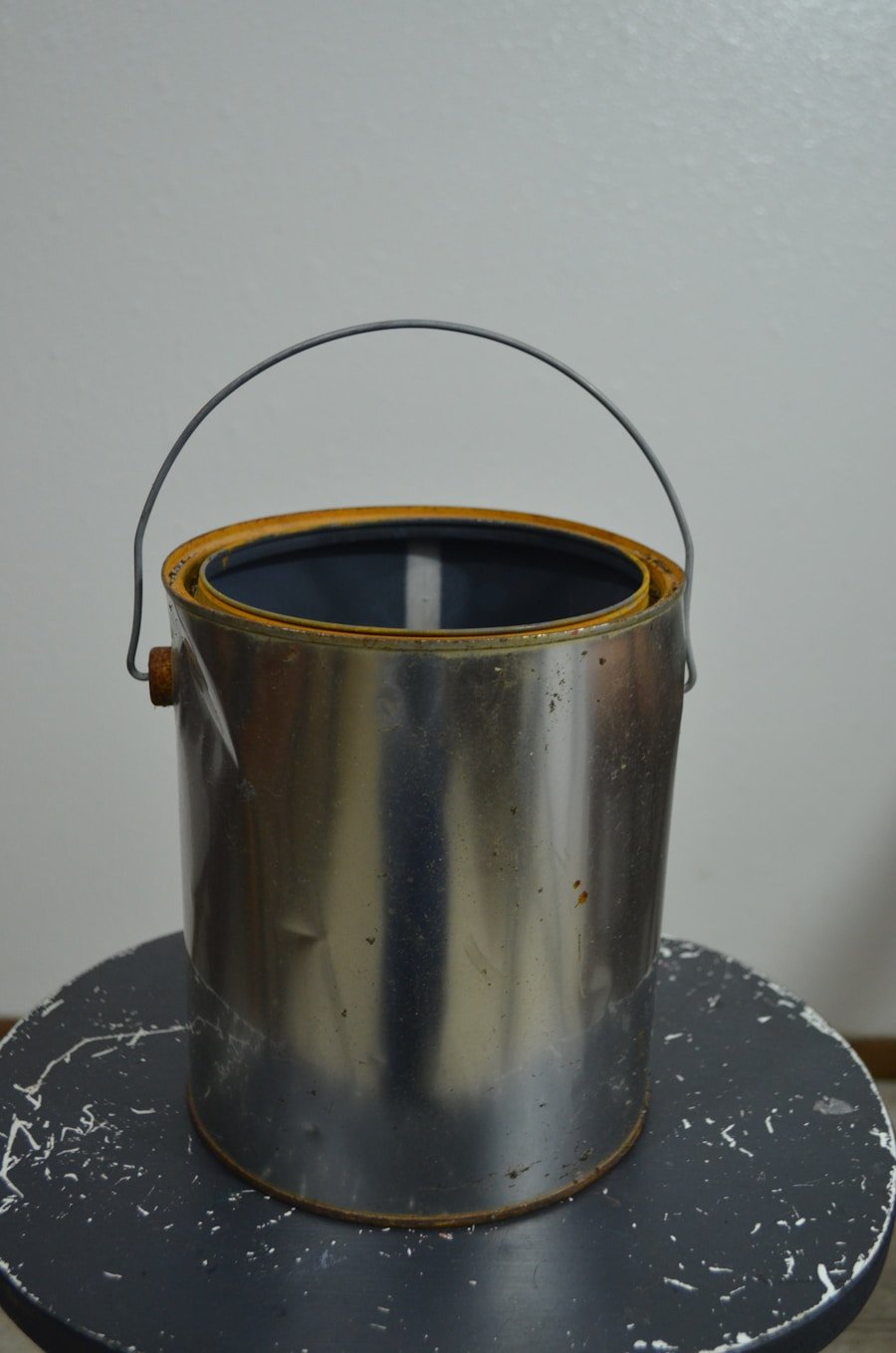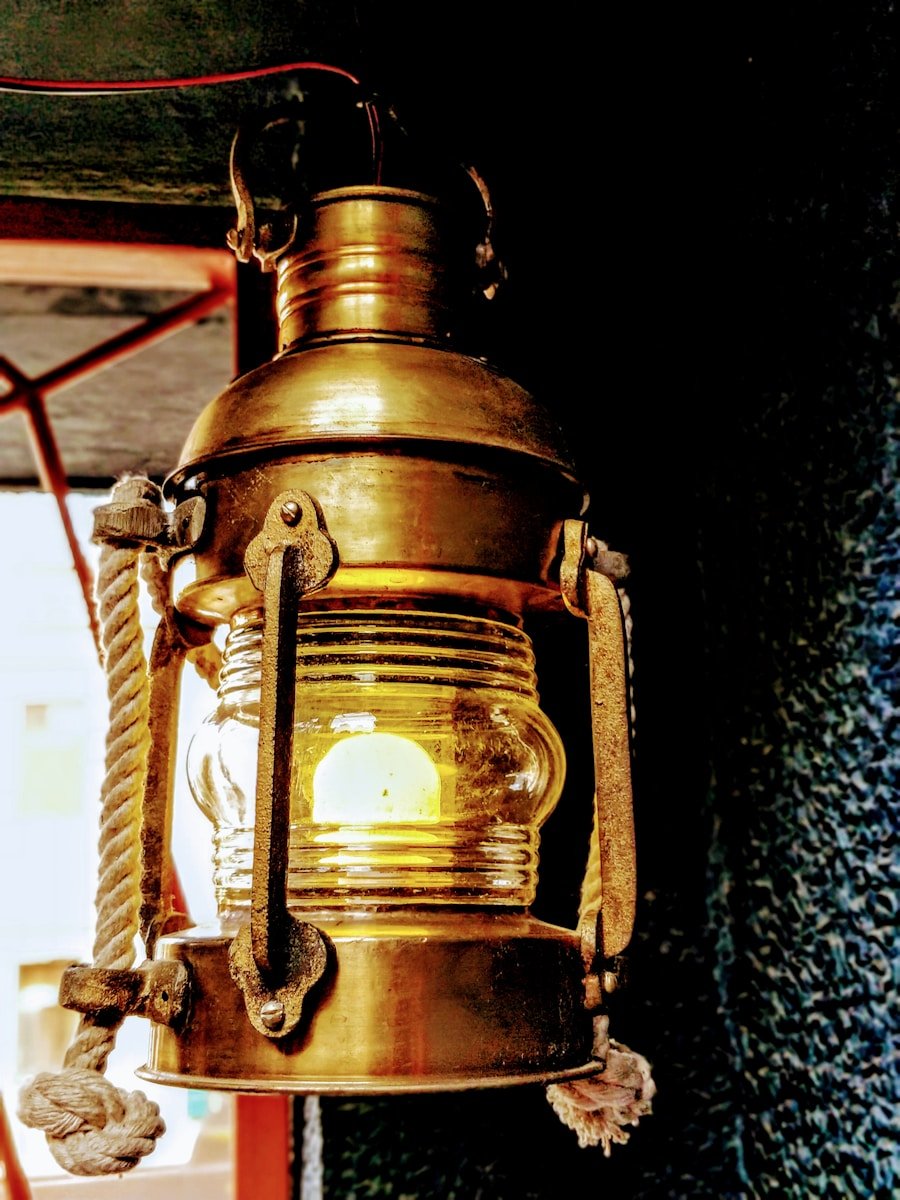Tin can lanterns have emerged as a popular craft project, particularly among those who appreciate the blend of creativity and functionality. These lanterns, often made from repurposed food cans, serve as a testament to the ingenuity of DIY culture. The process of transforming a simple tin can into a decorative light source not only showcases artistic expression but also promotes sustainability by encouraging the reuse of materials that would otherwise contribute to waste.
The allure of tin can lanterns lies in their versatility; they can be customized to fit various themes, occasions, and personal styles, making them suitable for everything from backyard gatherings to festive celebrations. The history of lanterns dates back centuries, with various cultures employing different materials and designs to create portable light sources. Tin can lanterns, however, have gained traction in modern times as a symbol of resourcefulness.
They are particularly favored in crafting communities for their accessibility and the ease with which they can be made. With just a few basic tools and materials, anyone can create a unique piece that not only illuminates but also adds character to any space. This article delves into the various aspects of tin can lanterns, exploring their cost, durability, effectiveness as light sources, environmental impact, safety considerations, and aesthetic value.
Key Takeaways
- Tin can lanterns are a popular DIY project that can add a warm and rustic ambiance to any outdoor space.
- Making a tin can lantern is a cost-effective and eco-friendly project, requiring only a few simple materials such as a tin can, hammer, and nails.
- Tin can lanterns are surprisingly durable and can last for a long time with proper care, making them a sustainable lighting option.
- While tin can lanterns may not provide the brightest light, they are effective for creating a cozy and intimate atmosphere in outdoor settings.
- Tin can lanterns have a minimal environmental impact, as they are typically made from recycled materials and can be easily repurposed or recycled at the end of their lifespan.
Cost and Materials of Making a Tin Can Lantern
Creating a tin can lantern is an economical endeavor that appeals to both budget-conscious individuals and those who enjoy crafting. The primary material required is, of course, the tin can itself. Commonly used cans include those that once held vegetables, soups, or beverages.
These cans are typically inexpensive or even free if one considers recycling options. Beyond the can, the essential tools include a hammer, a nail or sharp object for puncturing holes, and a container for soaking the can in water to prevent it from bending during the crafting process. Additional materials may include paint or decorative elements like beads and wire for hanging.
The overall cost of making a tin can lantern is minimal compared to purchasing pre-made decorative lighting options. A single lantern can be created for just a few dollars, especially if one utilizes materials already on hand. For instance, if you have leftover paint from previous projects or spare wire from other crafts, these items can further reduce expenses.
This affordability makes tin can lanterns an attractive option for schools, community centers, and families looking to engage in creative activities without breaking the bank. Moreover, the ability to personalize each lantern adds intrinsic value that mass-produced items often lack.
Durability and Longevity of Tin Can Lanterns

When considering the durability of tin can lanterns, it is essential to recognize that their lifespan largely depends on the materials used and the conditions in which they are placed. Tin cans are inherently sturdy; however, they are susceptible to rust if exposed to moisture over extended periods. To enhance their longevity, many crafters opt to apply a protective coating of paint or sealant after completing their designs.
This not only adds an aesthetic layer but also acts as a barrier against environmental elements that could lead to deterioration. In outdoor settings, tin can lanterns can withstand various weather conditions if properly treated. For instance, using outdoor-grade paint or varnish can significantly extend their life when hung in gardens or patios.
However, it is advisable to bring them indoors during harsh weather events such as heavy rain or snow to prevent water accumulation inside the cans. By taking these precautions, one can enjoy the beauty and functionality of tin can lanterns for many seasons, making them a worthwhile investment for those who appreciate handmade decor.
Effectiveness of Tin Can Lanterns as a Light Source
| Study Group | Number of Participants | Effectiveness Rating (out of 10) |
|---|---|---|
| Outdoor Camping | 50 | 8.5 |
| Emergency Situations | 100 | 7.2 |
| Decorative Use | 75 | 9.0 |
The effectiveness of tin can lanterns as light sources is influenced by several factors, including the type of light source used within them and the design of the lantern itself. Many crafters choose to use tea lights or LED candles due to their safety and ease of use. Traditional candles provide a warm glow but come with fire hazards that necessitate careful placement and supervision.
In contrast, LED lights offer a flickering effect similar to real flames without the associated risks, making them an increasingly popular choice for families with children or pets. The design of the lantern plays a crucial role in how effectively it disperses light. Lanterns with intricate cut-out patterns allow light to escape in beautiful shapes and designs, creating enchanting shadows that enhance the ambiance of any space.
The size and shape of the can also affect how much light is emitted; larger cans with more surface area may provide brighter illumination than smaller ones. Additionally, placing reflective materials inside the lantern can amplify the light output by bouncing it around the interior before it escapes through the openings.
Environmental Impact of Tin Can Lanterns
The environmental impact of tin can lanterns is predominantly positive when viewed through the lens of sustainability and recycling. By repurposing tin cans that would otherwise end up in landfills, crafters contribute to waste reduction efforts while simultaneously creating functional art pieces. This practice aligns with broader environmental goals aimed at minimizing waste and promoting recycling initiatives within communities.
Furthermore, using non-toxic paints and materials during the crafting process enhances the eco-friendliness of these projects. However, it is essential to consider the entire lifecycle of the materials used in crafting tin can lanterns. While repurposing cans is beneficial, one must also be mindful of the environmental footprint associated with producing new paints or decorative elements.
Opting for natural or biodegradable materials whenever possible can further mitigate negative impacts on the environment. Additionally, engaging in community workshops focused on crafting tin can lanterns fosters awareness about sustainability practices and encourages others to think critically about their consumption habits.
Safety Considerations for Tin Can Lanterns
Protecting Yourself During the Crafting Process
When puncturing holes in the cans, it is crucial to wear protective gloves and eyewear to prevent injuries from sharp edges or flying debris. Additionally, ensuring that children are supervised during this process is vital to avoid accidents.
Safe Lighting Options
Using tools like hammers and nails requires caution, and demonstrating proper techniques beforehand can help mitigate risks. When it comes to lighting options, choosing LED lights over traditional candles significantly reduces fire hazards associated with open flames. If you do opt for candles, make sure to place them on stable surfaces away from flammable materials and never leave them unattended while lit.
Outdoor Safety Considerations
If you plan to use your tin can lanterns outdoors, it is essential to secure them against wind or other elements to prevent them from tipping over and causing potential fires or injuries. By following these safety guidelines, you can enjoy the beauty of tin can lanterns without compromising your well-being.
Aesthetics and Decorative Value of Tin Can Lanterns
The aesthetic appeal of tin can lanterns is one of their most compelling attributes. These handcrafted pieces offer endless opportunities for personalization and creativity. Crafters often experiment with various designs—ranging from simple geometric patterns to intricate floral motifs—allowing each lantern to reflect individual tastes and styles.
The ability to paint or embellish these lanterns further enhances their decorative value; vibrant colors or metallic finishes can transform an ordinary tin can into a stunning focal point in any setting. Moreover, tin can lanterns are not limited to functional lighting; they serve as artistic expressions that can elevate the ambiance of both indoor and outdoor spaces. During festive occasions such as Halloween or Christmas, themed designs can add a whimsical touch to celebrations.
In gardens or patios, clusters of these lanterns create enchanting atmospheres during evening gatherings or romantic dinners under the stars. Their versatility allows them to complement various decor styles—from rustic farmhouse aesthetics to modern minimalist designs—making them a beloved choice among decorators and homeowners alike.
Is a Tin Can Lantern Worth the Investment?
Investing time and resources into creating tin can lanterns offers numerous benefits that extend beyond mere aesthetics or functionality. The combination of affordability, sustainability, and creative expression makes these lanterns an appealing choice for individuals seeking unique decor solutions without significant financial commitment. The process itself fosters skills such as craftsmanship and design thinking while promoting environmental consciousness through recycling practices.
Ultimately, whether one views tin can lanterns as worthwhile investments depends on personal values regarding creativity, sustainability, and home decor preferences. For those who appreciate handmade items imbued with character and charm, these lanterns represent more than just light sources; they embody stories of resourcefulness and artistic expression that resonate deeply within communities committed to sustainable living and creative endeavors.
If you are considering investing in a tin can lantern, you may also be interested in checking out the article on the 5 Best Outdoor Dinnerware for Entertaining. This article provides insights into the top dinnerware options for hosting outdoor gatherings, which could complement the cozy ambiance created by a tin can lantern. It’s always helpful to have the right tools and accessories to enhance your outdoor space and make it more inviting for guests.
FAQs
What is a tin can lantern?
A tin can lantern is a homemade lantern made from a tin can, which is typically decorated and fitted with a candle or other light source.
How effective is a tin can lantern as a light source?
Tin can lanterns can provide a soft and ambient light, but they may not be as bright or long-lasting as commercial lanterns or flashlights.
Is a tin can lantern worth the investment?
The value of a tin can lantern depends on personal preferences and needs. It can be a fun and creative DIY project, but it may not be as practical or reliable as other lighting options.
What are the benefits of using a tin can lantern?
Using a tin can lantern can be a creative and sustainable way to repurpose materials, and it can add a charming and rustic ambiance to outdoor spaces.
Are there any drawbacks to using a tin can lantern?
Tin can lanterns may not provide as much light or durability as other lighting options, and they may require more maintenance and attention to safety.


